The many aspects of a species ecological niche are generally quantified singly, or we refer to some abstract “multidimensional niche”, meaning we give up trying to characterize it before we even started. In a paper published recently in the Journal of Biogeography GARDians, led by Enav Vidan and Jonathan Belmaker, tried to define, and numerate, the main types of lizards out there – as reflected in their ecology.
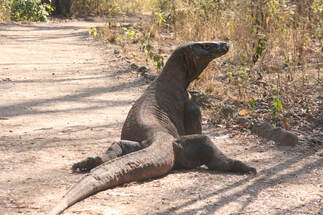 Komodo dragon (Photo: Marinus Hoogmoed)
Komodo dragon (Photo: Marinus Hoogmoed) These four traits obviously interact, and some combinations may be more or less common than others: small, diurnal, terrestrial insectivore is after all the first picture to pop to mind when the term ‘lizard’ is introduced (except for the diehard gecko lovers among us, and well, there are a few of us with this infatuation). But are there tiny nocturnal herbivores? Or huge nocturnal lizards? How common is a marine iguana (large, herbivorous, swimming diurnal beast) type lizard – do we remember it simply because it is exotic?
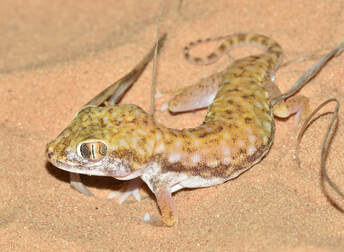 Stenodactylus petrii (photo: Marco Ferrante)
Stenodactylus petrii (photo: Marco Ferrante) We found that the most common functional trait combinations are (1) diurnal, terrestrial, carnivores (20% of the species); (2) diurnal, scansorial, carnivores (16%); and (3) nocturnal, scansorial, carnivores (13%).
Lizards could be robustly classified into seven ecological “Archetypes”:
- terrestrial (obviously, usually small, carnivorous, diurnal thing that are, well, active on the ground), think Ablepharus skinks, for example
- Scansorial – small diurnal, carnivorous, scansorial species, such as Pristurus rupestris.
- Nocturnal – small terrestrial, scansorial and carnivorous species that are, at least partially, active at night (i.e. they are either nocturnal or cathemeral). Like most geckos of course – say Hemidactylus
- Herbivorous - relatively large, diurnal, terrestrial and scansorial species whose diet includes substantial amounts of plant matter (either as omnivores or herbivores). Saharo-Arabian Uromastyx for example fit the bill very nicely
- Fossorial – lizards living at least partially underground, mainly small, carnivorous, with varied activity times. Many skinks, such as Ophiomorus represent this strategy
- Large - very big (all species >200 g), mainly diurnal, terrestrial or scansorial species. You know, Varanus komodoensis and Komodo-dragon wannabes.
- Semi-aquatic - dwelling in aquatic habitats, relatively large, and generally both carnivorous and diurnal, things like Uranoscodon superciliosus
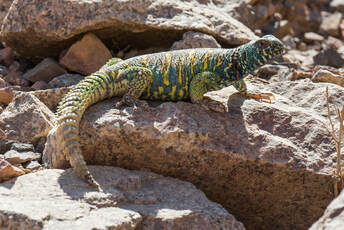 Uromastyx ornata (photo: Alex Slavenko)
Uromastyx ornata (photo: Alex Slavenko) Surprisingly, we found that functional diversity peaks in areas with medium species richness and slowly decreases toward the speciose areas. This unexpected richness-functional diversity unimodal association is also revealed within the scansorial, large, and semi-aquatic strategies. The richness patterns of terrestrial, nocturnal, herbivorous, and fossorial strategies increase with species richness, but globally functional richness peaks in areas with medium species richness.
Thus increases in richness do not necessarily stem from increased functional diversity. Species diversification within specific strategies often dominates richness patterns. Our findings support the contention that it is important to consider different functional and ecological subgroups when studying richness patterns.

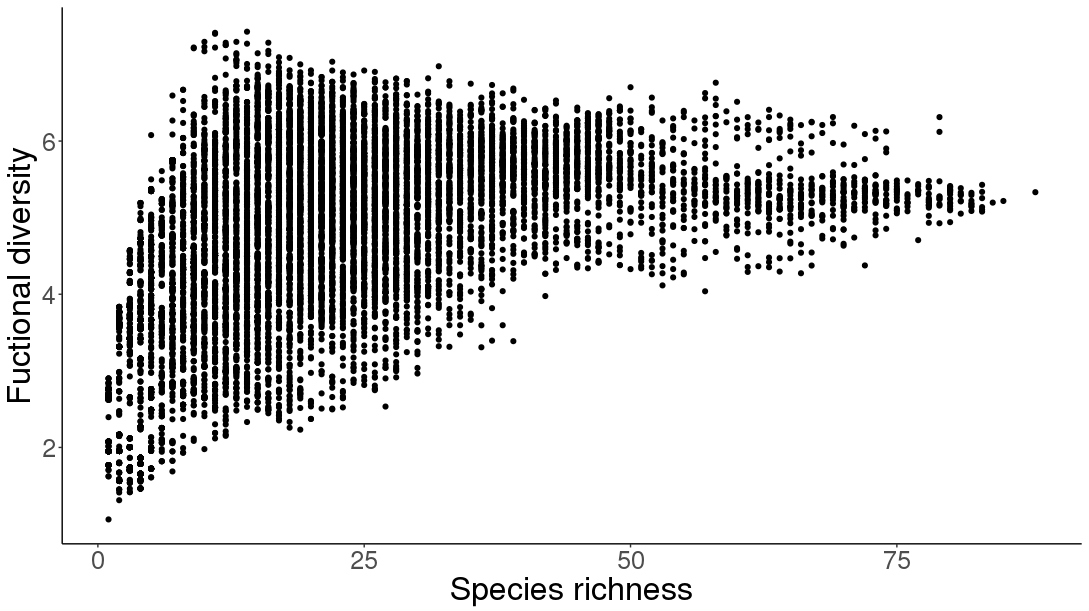
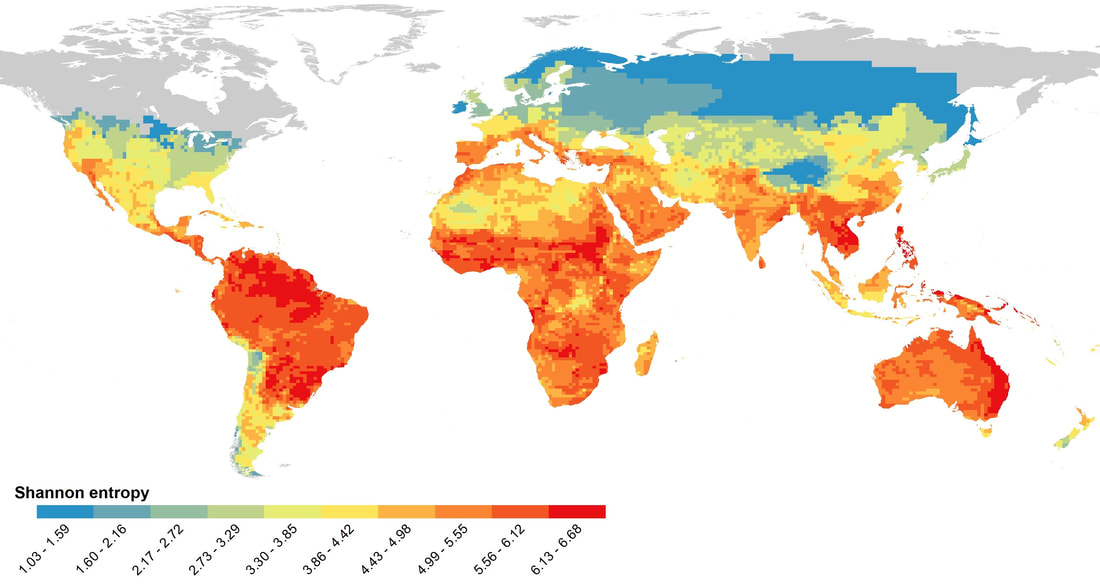
 RSS Feed
RSS Feed
